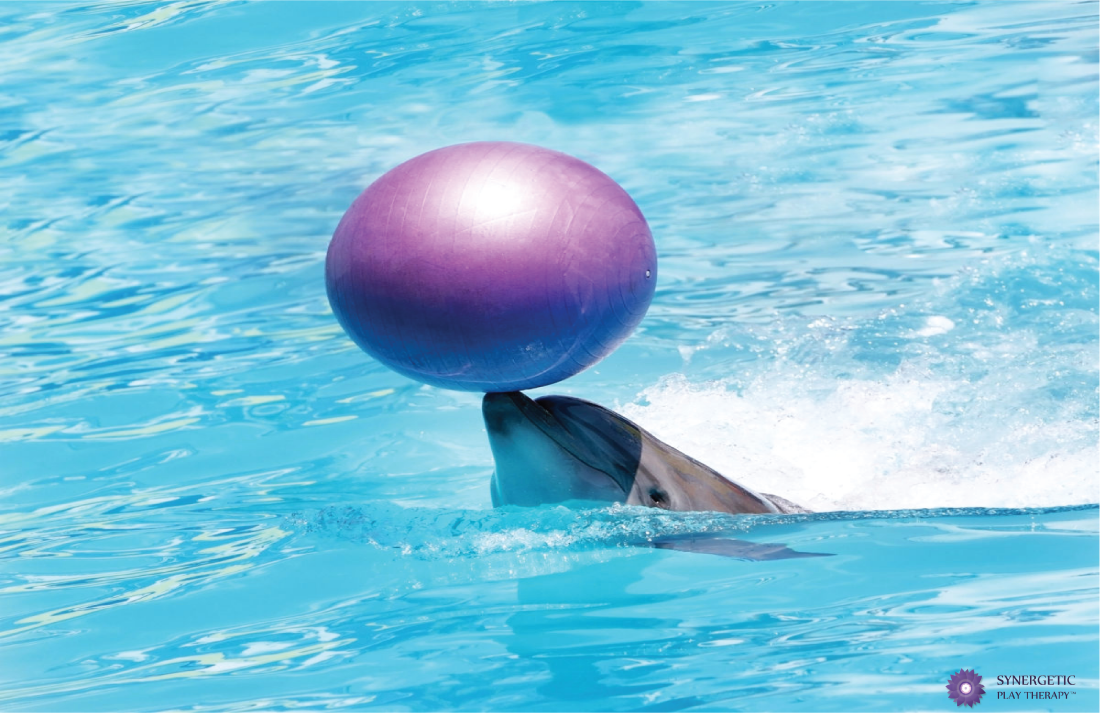By Lisa Dion, LPC, RPT-S
In many ways, it’s easy to see why children play. It’s fun, it makes them happy, and it allows them to imagine possibilities real life may not offer. It evokes laughter, a sense of accomplishment, and butterflies in the stomach. It also provides a platform upon which to make friends – kids have a unique ability to play with just about anyone who is willing. When we think of play, we often think of our children. Out of the mouths of babes comes words such as, “Tag, you’re it.”
Yet, from a neuroscience perspective, play also provides children with something more and we’re discovering this “something” through the study of animals. The American Journal of Play reviewed studies showing that certain species are encouraged to play in youth. And, when they do play, they improve their social skills, cognition, and ability to adapt to unexpected circumstances. They’re also better able to regulate emotionally – something at the heart of Synergetic Play Therapy!
Most studies show that the ability to play (and the desire for it) is exhibited in animals with a developed neocortex and animals that live in complex situations. Dolphins, particularly, are well known for their high level of intelligence – they even teach their offspring how to use tools! They also have a very complex neocortex. It is so complex scientists argue that dolphins are the most intelligent creatures on earth after humans. Perhaps it should come as no surprise that they are also among the most playful.
This play, just like with humans, is not all fun and games – when dolphins play, they learn social skills and better understand how to be part of a social group. It teaches them how to adopt certain behaviors and teaches them how to learn (does this sound familiar? Play does this for us too!).
Many animals need play – it’s not something that’s voluntary! Without it, dysfunction can set in (yep, even dolphins can grow up to be dysfunctional adults).
Rats need it too! We might view them as pests, but they’re also highly intelligent creatures. Their brain is smaller and less complex than the human brain, yet it maintains many similarities. And another commonality? Their penchant for play (in fact, they’re the most playful of all rodents).
When rats are raised in isolation – something that goes against their nature – their brain exhibits signs of chemical deficiencies and abnormalities. They also experience increased anxiety and tend to overreact to situations that don’t warrant much reaction. And they’re more likely to possess addictive behaviors and cognitive challenges.
Play is fun for animals and it’s fun for humans too – Where else can you reign over a magic kingdom of elves? Where else can you defeat an evil villain with a Nerf gun? Where else can you win the NBA Championship at the buzzer despite only being three-feet-tall? Play provides children with so much.
But it’s not just an outlet for energy; it’s not just a cultivator of imagination. When viewing play through a neuroscience lens, it gives us the ability to learn, adapt, think, and feel. It provides us with social and cognitive foundations. It sets us up for success.
What all of this means is that play is a necessary part of childhood, perhaps the most necessary part. Play that isn’t restricted, limited, or rigid is the most ideal – allow children to play their way and you allow them to flourish.
Interested in credits and courses delivered to your living room? Take a look at all our classes, available on our learning site.






